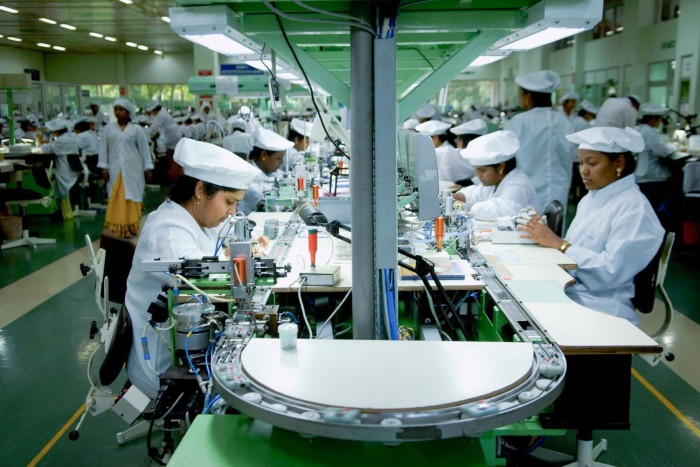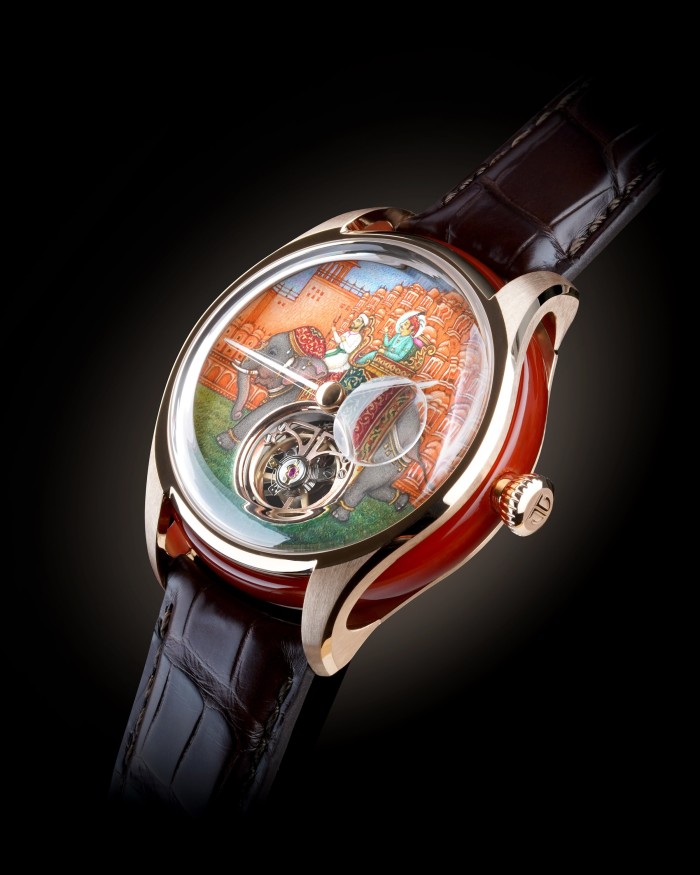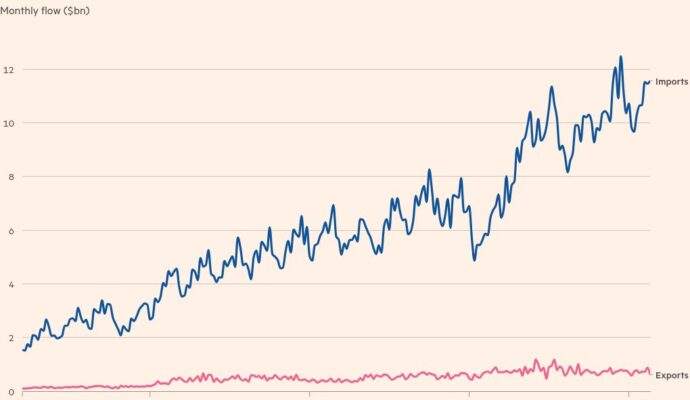In Bengaluru, the so-called Silicon Valley of India once known as Bangalore, a quiet watchmaking revolution is under way. The world’s most populous country is not known as a luxury watchmaker, but one Indian manufacturer has announced plans to turn that on its head.
The Titan Company, part of the vast $180bn-revenue Tata empire, has set its sights on producing luxury mechanical watches that it says will offer “engineering quality, value and Indian craftsmanship”.
It won’t be starting from scratch. Titan is already one of the world’s largest watch producers, making around 15mn timepieces a year, most of them mall-style designs with battery-powered quartz movements that retail for less than $100.
But six years ago it initiated what it calls a “premiumisation journey”, upscaling its mechanical watch business through sub-brands such as Nebula and Xylys. Earlier this year, it announced the Nebula Jalsa, a $46,000 watch with an in-house tourbillon movement and a hand-painted dial.
Sitting in his office in a space-age floating building in the heart of Titan’s state-of-the-art Integrity Campus, which opened in 2018, Titan’s managing director CK Venkataraman outlines his vision. “The market for Indian jewellery is very large outside India, but there is no such thing as a market for Indian watches and it will not be easy for us,” he says. “But we are confident we can play this game outside India. This is the dream.”
Titan is accelerating. It says in April it produced around 3,000 mechanical watches, a figure that by September had increased to 500 a day against a monthly target of 8,000. Assuming a 22-day working month, its monthly mechanical output now stands at around 11,000 pieces.


If volume isn’t a problem, quality could be. Currently, Titan’s standard mechanical movements offer accuracy of -10 to +30 seconds a day, and power reserves of around 36 hours. A Swiss chronometer is accurate to -4 to +6 seconds a day, while Rolex’s benchmark narrows to -2 to +2. Few Swiss watches now offer power reserves below 40 hours, while many industrial makers offer between 50 and 70 hours. Design is a challenge, too: by contemporary standards, Titan’s watches are oversized and lack the subtlety and sophistication international luxury buyers prioritise.
But betting against Titan could be short-sighted. In India, it runs a verticalised business — manufacturing, marketing, distributing and retailing across multiple categories, including watches, eyewear and jewellery, which it says accounts for 80 per cent of its revenues. It operates more than 3,200 stores in India, and through its Tanishq jewellery brand now has showrooms in the US, the Middle East and Singapore. Company revenues hit $6.5bn last year; if it were a Swiss watch company, that would make it second only to Rolex.
Accordingly, Titan enjoys high levels of awareness and a robust reputation in its home market. It was founded in 1984 by Tata and Tidco (Tamilnadu Industrial Development Corporation) with support from the French specialist watch movement manufacturer France Ébauches, but only got going in the 1990s after India’s economic liberalisation. As one of the first brands to take advantage of the then government’s softening to private enterprise, it became a household name. For many Indians, Titan is a first watch, the country’s Swatch or Casio, the name a symbol of pride, nostalgia and the country’s economic aspirations.
But for now, awareness of Titan is limited beyond what Venkataraman calls the “Indian diaspora”. It exports to more than 40 countries, he says, but markets to Indian expats looking for a taste of home.
Venkataraman is realistic, but says the company won’t ignore its roots. “A fresh take in the area of appeal is required,” he admits. “But at the same time, because of where we come from there will be an opportunity to create a line that showcases Indian artistry and craft, combined with engineering and manufacturing.”
In August, Titan moved to resolve this by appointing Kuruvilla Markose as chief executive of its watch division, reporting to Venkataraman. Markose, a stylish figure with long greying hair, had previously run the company’s international business division, expanding its watch, jewellery and eyewear businesses into new territories. He brings an understanding of market dynamics — and, critically, tastes — beyond Titan’s Indian base. “Kuruvilla comes with the exposure and the experience of playing in a stadium which has got a much more demanding audience,” says Venkataraman.
But for Venkataraman, what will give his brand the greatest chance of success isn’t simply broadening its aesthetic appeal. “What will happen is there will be an important comparison in the product value,” he says, looking down the line. “Today, [consumers are] looking only for the label, and [in watches] a Swiss label, but not everyone in the world is like that anymore,” he says. “Look at the automobile business and at Chinese brands. China is no longer considered as it was.”


The Jalsa might be a case in point, even while it costs over $30,000 more than Titan’s next most expensive watch. As a rule, Swiss watches with solid gold cases, tourbillon movements and individually hand-painted dials command far higher sums. While Jalsa will remain a halo piece, Venkataraman says it will unlock the company’s ambitions to become a global player selling watches for between $2,500 and $6,000.
As for quality, he uses the example of some of Titan’s established sub-brands, particularly Edge, a series of slimline pieces in the Bauhaus style that are powered by Titan’s own ultra-thin quartz calibre, which was introduced in 2002 and is just 1.15mm thick. Many Edge watches have titanium or ceramic cases, retail for less than $1,000 and have previously been recognised by Germany’s Red Dot Design Award. Last year, two of its watches were longlisted by the Grand Prix d’Horlogerie de Genève.
“Our watches offer exceptional value at their price,” says Venkataraman. “We will use all the learning and the capability we have developed with the tourbillon to develop some very complicated masterpieces in those price bands that will give us an additional edge in international markets, especially on overall value.”
Expansion plans are coming together. Next year, Titan will scale up its new finishing workshop for decorating and polishing components, and there is talk of manufacturing “assortments”, the complex beating heart of a watch movement before the end of the current financial year. However, it will continue to import hairsprings, the most delicate component in a mechanical movement, from the Swiss company Atokalpa. It also says it has mechanical movements in development with improved accuracy and higher power reserves.
Some factors will be beyond the company’s control, though. Titan’s ambitions to grow its US business were dealt a blow this summer when the Trump administration imposed a 50 per cent levy on Indian exports to the US. “We will navigate that by looking at GCC [Gulf Cooperation Council] countries,” says Venkataraman. “To manufacture and export from there is under consideration.”
Venkataraman says he is under no illusion as to where Indian luxury watches may one day sit in the pecking order. “The intention here is not to displace the Swiss,” he insists. “It would be ridiculous to contemplate. It’ll take a lot of time to change it [perceptions], but there is a growing tribe of people across the world who are starting to value to real value and not just [brand] names.
“We are not kidding ourselves that we are as good as the best in the world, but we have a burning desire, an urgency to excel and reach there fast.”


